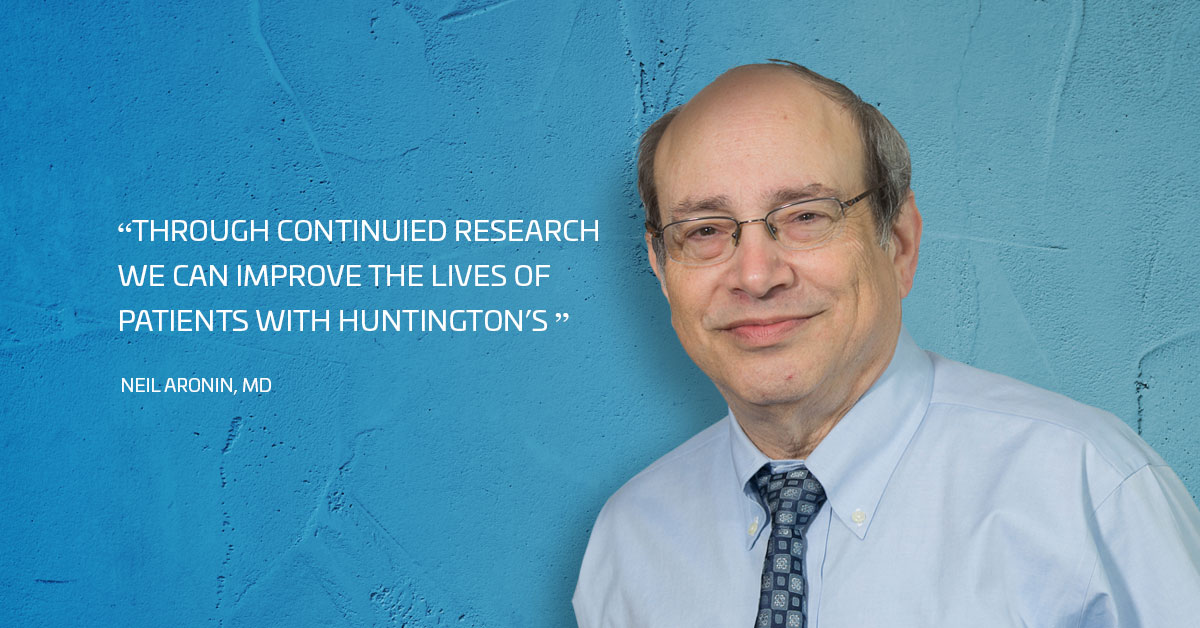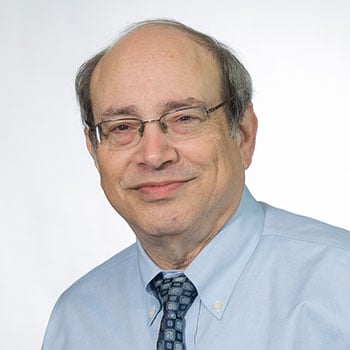
Why did you choose to focus your research on Huntington’s disease?
My interest in Huntington’s disease developed after I had become an endocrinologist. I wanted to receive further training in research, with the initial goal of advancing my understanding of how the brain regulates the endocrine system through the relationship between the hypothalamus and the pituitary gland. For this training, I went to Massachusetts General Hospital to work as a postdoctoral fellow with the department chair who was doing neuroendocrine research. After a few months of working in his lab, he asked whether I wanted to work with him on a grant proposal to obtain funding for their research on Huntington’s disease. I was not a neurologist, and at the time, I was not fully aware of what Huntington’s disease is. As I began to learn about the disease, I realized how debilitating it is. Huntington’s disease is neurodegenerative and fatal, with the time from disease emergence to death often being only 10 to 30 years. At this time, in 1979, researchers had no idea what the disease-causing gene was or how we might be able to treat the disease. Ultimately, our grant proposal was successfully funded. It was to learn how the brain changes in Huntington’s disease, using samples of brain tissue from patients. We published several valuable findings, and I continued to conduct research on Huntington’s disease even after I moved to the Endocrine Division at the UMass Chan Medical School.
I often gave talks on the neuropathology of Huntington’s disease, and after one of these talks, I remember a senior faculty member asking me, “Neil, why are you working on Huntington’s disease? We don’t know what causes it, there’s no treatment, you should work on something easy like diabetes.” I told him, “We’re going to figure it out.” In 1993, the defective gene responsible for Huntington’s disease was discovered. This was a game-changing discovery! Once the gene was identified, I was able to use that information to make and use antibodies to probe the brain to understand the protein that the gene codes for. I carried out this research based on the cell biology techniques that I had learned from Dr. Rosalyn Yalow, of Mount Sinai Hospital, who had been awarded a Nobel Prize for co-developing the radioimmunoassay technique.

A few years after the gene responsible for Huntington’s disease was identified, my colleague Dr. Craig Mello discovered RNA interference, a mechanism that can degrade mRNA from a specific gene. I started wondering whether RNA interference could be used to treat Huntington’s disease. I consulted Craig about this possibility and, although he thought it could in theory be used to change one of the alleles, he wasn’t able to collaborate with me on the work, as his studies were using the roundworm, not mammals, as their model organism. But he then put me in touch with Dr. Phillip Zamore, whose lab was in the same building as mine. Eventually, Phil and I met in the hospital cafeteria to discuss our ideas (and, of course, we forgot paper and ended up using napkins —lots of them —to write out 10 years’ worth of experiments). Phil and I have had many fruitful collaborations on Huntington’s disease projects from 2002 onwards.
Why is Huntington’s disease so interesting and what is the connection between Huntington’s disease and Alzheimer’s disease?
Huntington’s disease is interesting because it is a genetic disease caused by one allele of one gene. We know which gene it is and what the mutation is (an expansion of the CAG repeat region in Exon 1 of the Huntingtin gene). By comparison, Parkinson’s disease and Alzheimer’s disease could be caused by one gene or many genes, and environmental factors. We do not yet know what the genetic target is for these diseases. For Huntington’s disease, we absolutely know what the target is.
Understanding Huntington’s disease and developing its treatment moves us one step closer to working on more challenging diseases, such as Parkinson’s disease and Alzheimer’s disease. Everything we learn in our studies on Huntington’s disease will be applied to the study of more challenging diseases. And that is why scientists typically work on mechanisms in a simpler model first (for example, a worm or mouse model), which they can apply to disease models, and then to human patients.
What do you like about working in Huntington’s disease research?
There are two parts about working in the Huntington’s disease field that I like the most. First, the discoveries we have made as a team could be useful in improving lives and treating the disease, and, as a physician, this resonates with me. Secondly, the work connects me to the intellectual engagement of science and aspects of science that I would not have necessarily encountered, for example, RNA interference and understanding RNA biology. And now I also have a grant on gene editing, and all of this keeps one alerted to what is new in science, which is exciting. I love going to scientific meetings just to learn.
What would you tell a young researcher who wants to focus on rare diseases?
There is a lot we can do, especially now that we better understand genetics, genetic disorders, and potential treatments for genetic disorders. I also explain to young researchers in the lab that it’s all disease. Whether you treat breast cancer, asthma, or Huntington’s disease, which does not affect nearly as many people, it’s all disease. Of course, for the patient and the family of the patient, getting information on the disease is what counts, not how many people have the disease.
What would you tell potential donors?
Research is expensive. We’re fortunate to have private foundations and individual donors who support Huntington’s disease research. In fact, private funding to support Huntington’s disease research is nearly 3-4 times more than federal funding, and you will not find that scenario in many other diseases. We would be nowhere near where we are in understanding the disease and potential therapeutics without private support.
What would you tell individuals who just learned that they, or a loved one, had Huntington’s disease?
I discuss with patients what the disease does and the approaches we can take to try to improve their condition. Although there is currently no treatment for the cognitive changes in Huntington’s disease, patients may try treatment to reduce the movement disorder as well as antidepressant drugs. I also explain the direction that the research is taking and that patients can participate in studies that are really giving back to the field of medicine. Although we can improve the lives of patients with Huntington’s disease and similar disorders, I do not promise to patients that we are going to have an effective drug in the clinic in 5 years. However, I want to be hopeful!
What do you think about patients participating in medical research?
We need them! Patient participation is essential. I think patient groups also push the science along. When I go to scientific meetings and give a talk on Huntington’s disease, it can sometimes turn into an emotional experience for me. People from patient groups approach me and say, “I volunteer, whatever you want to give me, I’ll take.” And secondly, the patients’ families are upset; I get hugs, so I hug them back.
Although Huntington’s disease is a rare disease, it is not ultra-rare. You may realize that someone you know has the disease, or that person will know someone else who has it. We have staff here at the University of Massachusetts Medical School who have family members with Huntington’s disease.
What is the impact of your research on the rare disease community?
It is hard for me to judge what my impact is on the rare disease community, but I do find that patients and families seek me out, which is interesting, because I do not take care of patients with Huntington’s disease. I take care of endocrine patients with genetic diseases. But I’m committed to finding a treatment for patients with Huntington’s disease.
Can you share something unique about yourself?
I used to be very fast at running track in high school and then in college at Duke. One day when I was a freshman at Duke University, the coach of the gym class, who was also the head of the sprint track team, lined the students up and said, “Neil, can you step forward?”, and when I stepped forward, he said “I want you on my track team”. He asked me to see him after class, which I did. He said, “We can use you on the relay team right now, guaranteed you’re going to run; we’re going to the Florida relay.” I was thinking, “do I have to go to the relay? What about my organic chemistry lab?” And then the coach said, “I’ll pay for your books and your room and board.” And I kept asking him, “When am I going to make up the lab?” He replied, “I don’t know, rearrange your schedule!”
I ended up receiving a scholarship to run track at Duke University, which I turned down. No regrets —I still went to Duke; I just didn’t run.
Some years later, my oldest daughter turned out to be a really good runner, which I believe she got from my wife, not me. She was an all-state distance runner and a Boston Globe All-Scholastics athlete. At the time, she was experiencing some muscle problems and her high school coaches didn’t seem to know how to help her. I ended up calling the Duke University track coach for advice. He said, “Neil? I remember your name. What happened to you?” And I said, “Well, I went to medical school.”
About Neil Aronin, MD

Neil Aronin, MD, is a professor of medicine and RNA therapeutics and the Higgins Family Professor of Neuroscience at the UMass Chan Medical School. Dr. Aronin earned an MD from the Perelman School of Medicine at the University of Pennsylvania. He completed an internship and residency at Duke University Medical Center, was a Clinical Fellow at Mt. Sinai Hospital, and received postdoctoral training through a research fellowship at the Massachusetts General Hospital and Harvard Medical School. He joined UMass Chan Medical School in 1981 and is division chief of Endocrinology and Metabolism in the Department of Medicine. He is board certified in internal medicine, endocrinology, and metabolism.
Aronin Lab Website